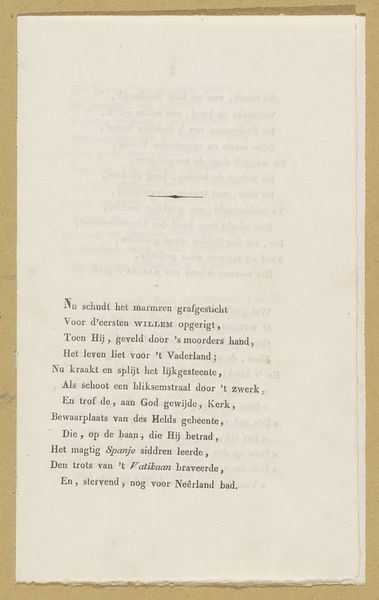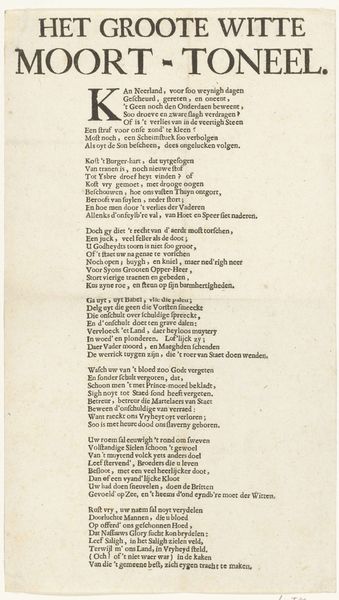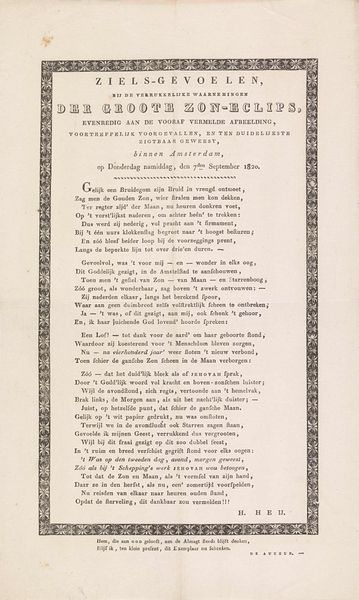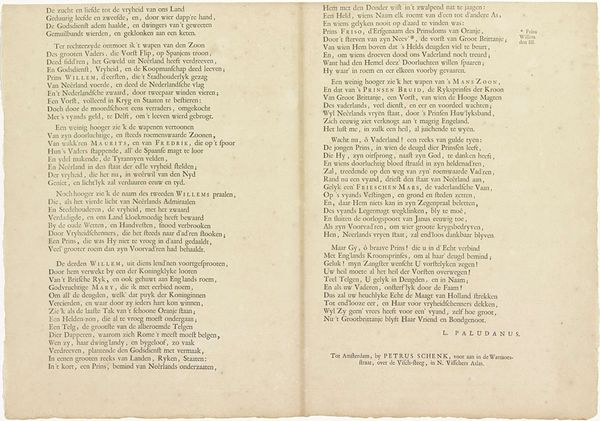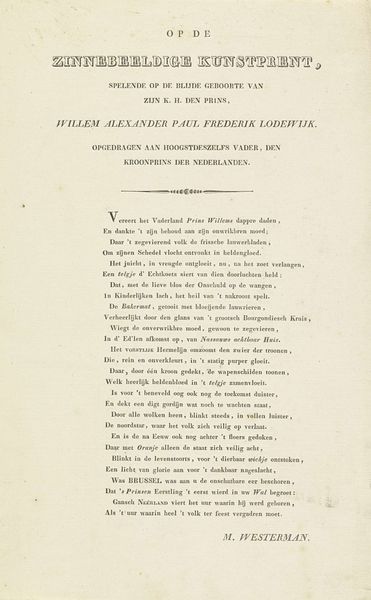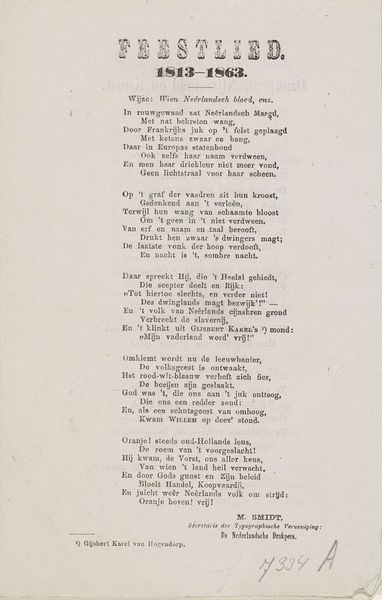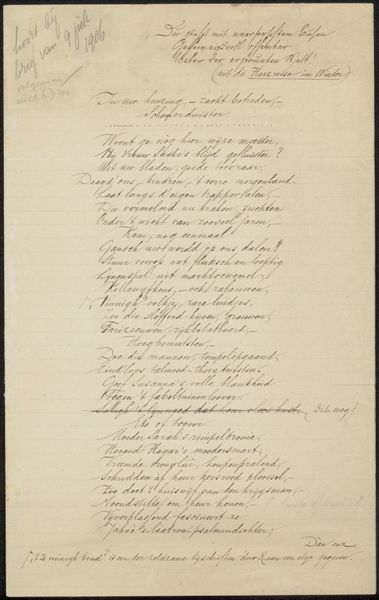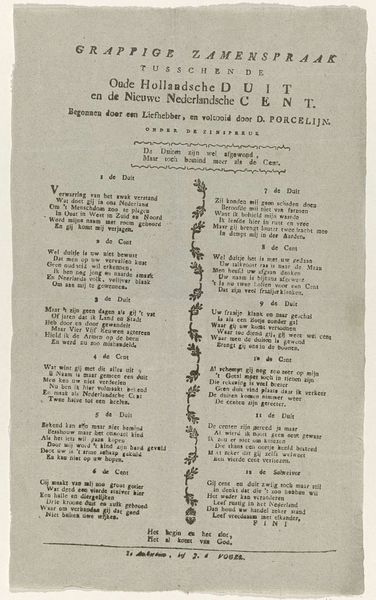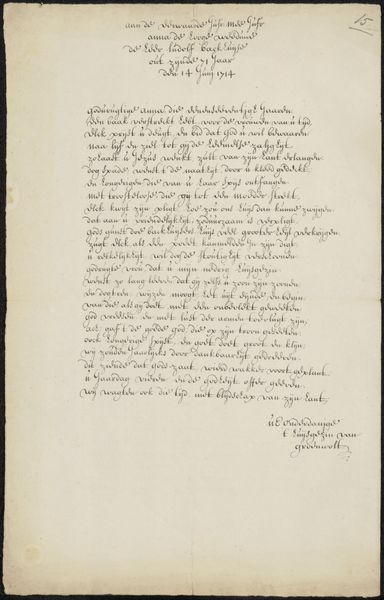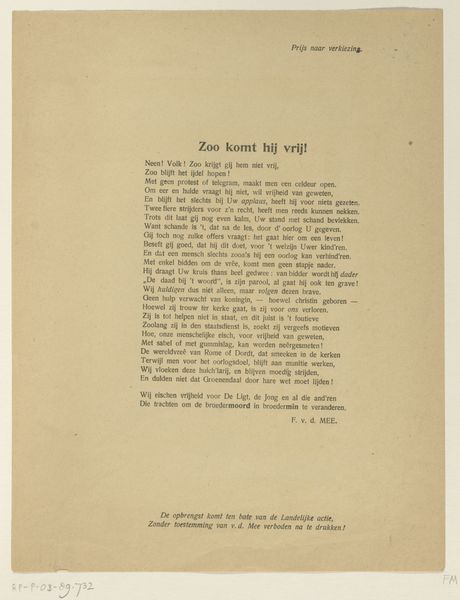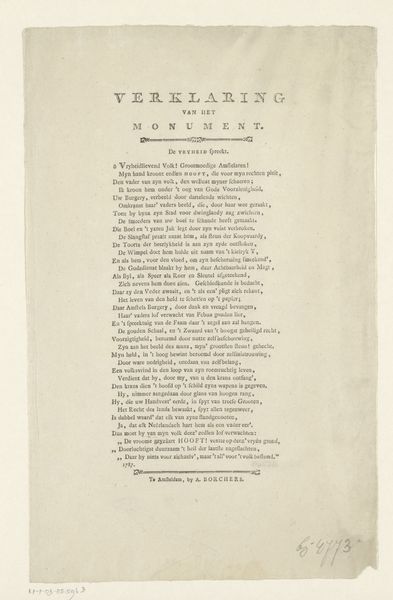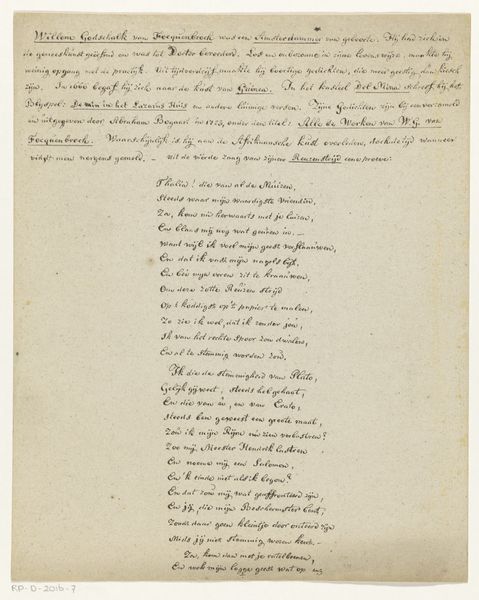
print, typography, poster
# print
#
typography
#
romanticism
#
history-painting
#
poster
Dimensions: height 197 mm, width 160 mm
Copyright: Rijks Museum: Open Domain
Curator: Here we have a striking broadside print titled "Vers bij de spotprent op Napoleon" created anonymously in 1813. It's quite rare; we have it here at the Rijksmuseum. Editor: My first impression? Stark. Visually, it feels oppressive. So much text crammed together, it evokes a sense of being overwhelmed. And knowing it was made in 1813, one can only imagine the emotions roiling just under the surface. Curator: Indeed. This print exemplifies Romanticism's potent blend of history and raw emotion. The text is a scathing critique of Napoleon, published at a time when his grip on Europe was beginning to loosen. The "geweldenaar" in the title translates roughly to "tyrant." Editor: The symbolic language is vivid! The verses detail Napoleon burdened by his deeds: his head weighed down by the Northern Eagle and "Ehrfort's bloody Ribbon," suggesting a deserved punishment. Curator: Absolutely. It's riddled with potent symbols, each carrying a heavy political and emotional charge. The spiderweb woven across his chest, symbolizing vanity and how even great power can unravel, is a powerful image. The spiderweb as a trap, an instrument for deceit. And surrounding it are names of countries that took part in taking him down. The message is unequivocal, that justice will ultimately prevail. Editor: There’s something very psychologically charged about it, too. Beyond the simple condemnation of Napoleon, it speaks to anxieties about power and control, universal fears, I think. "Poisonous vermin," and similar labels evoke hatred of someone in power so potently that even after his ouster one can't quite escape the negativity associated with him. Curator: Well, the intersectionality of power, corruption, and justice is an element that still resonates today. But one must note how this poem also shores up a worldview based on a narrow and nationalistic view of "freedom." Editor: Agreed, but that’s the genius of art, isn’t it? To both capture and complicate historical moments. I'm stuck on this line; “The place of the human heart covered, with hatred." One might take it to describe the way Napoleon treats the human race, but it more viscerally tells us about the mental state of the poem's writer, wracked with anger at this time. Curator: Ultimately, "Vers bij de spotprent op Napoleon" acts as a fascinating time capsule, reflecting both the artistic conventions and the sociopolitical upheavals of its era. Editor: An emotionally stirring example of how visual art and textual narratives combine to shape public sentiment, leaving behind echoes of a tumultuous past.
Comments
No comments
Be the first to comment and join the conversation on the ultimate creative platform.
